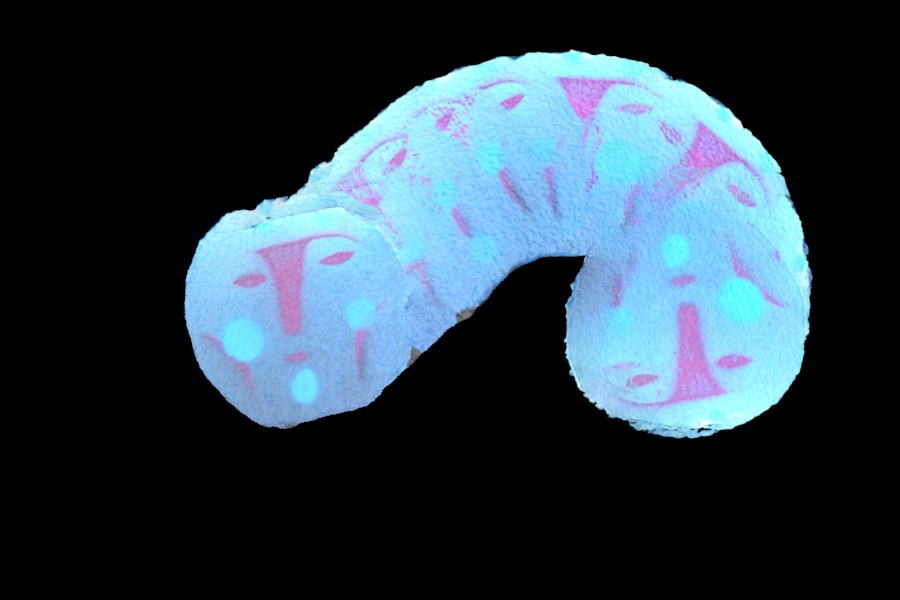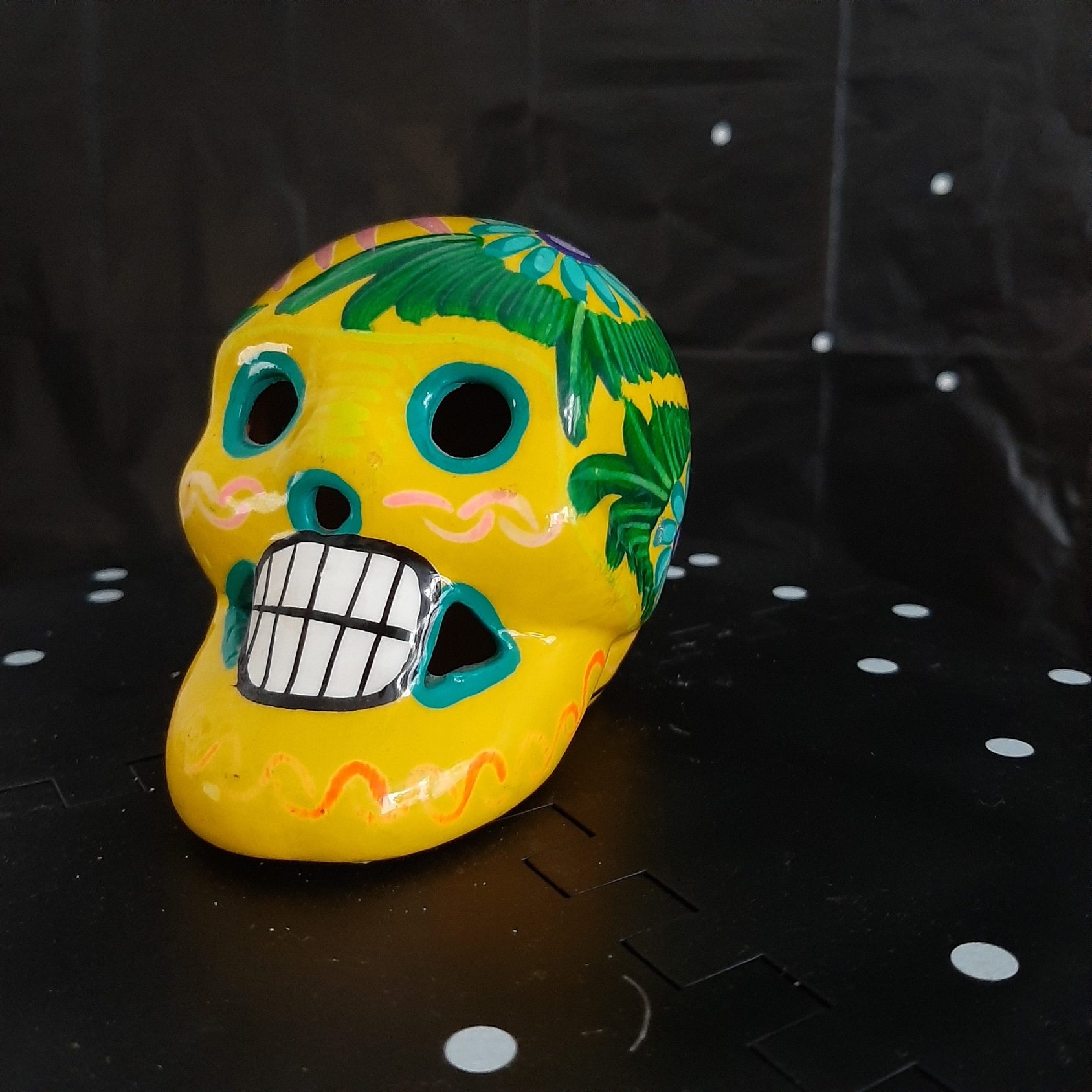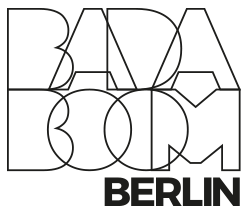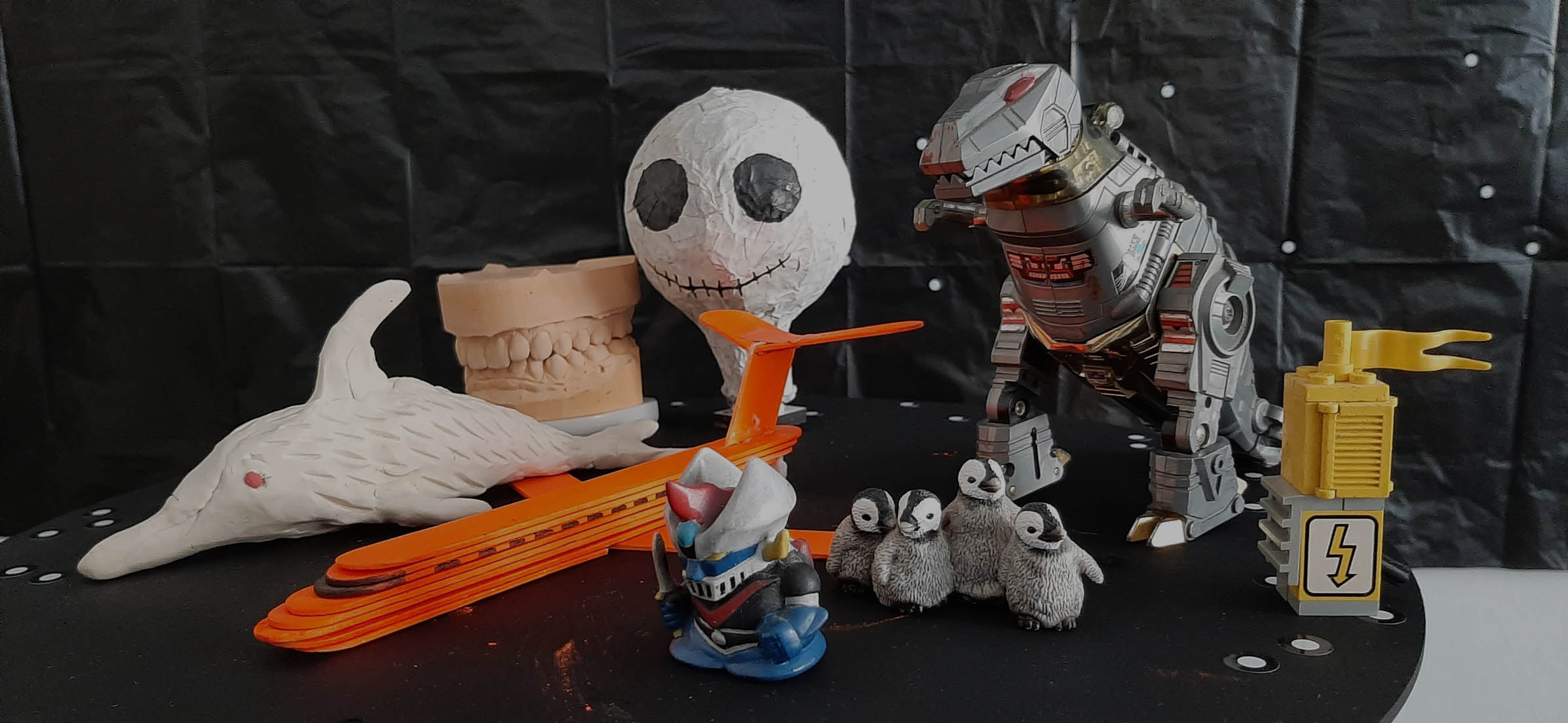Results of the first scanning tests, with a description of scan-friendly materials, recurring errors and”creative” results. Also a repository of Revopoint setting of all object tested so far. The objects are a mixture of previous projects and found objects.

We quickly shaped a dolphin out of play dough, and added an extra texture to the body. This additional detail resulted in a good readability for the scanner. Please note, as we placed the dolphin on its side for a second pass, the upper fin slightly bent because of the soft material, resulting in an imperfect detail.
| RGB | DEPTH | SCAN TYPE | FUSE PITCH | MESH QUALITY | MESH DENOISE |
| 40 | 5 | Features | 0.5 | 4 | 3 |
The head of a “Nightmare before Christmas” inspired Jack Skeleton has been very easy to scan, thanks to its spherical shape and to the detailed texture of Papier-mâché, providing lots of informations for the camera.
| RGB | DEPTH | SCAN TYPE | FUSE PITCH | MESH QUALITY | MESH DENOISE |
| 86 | 1 | Features | 0.5 | 4 | 3 |
This dental plaster cast has been very easy to digitize. The material and all details provided by the mold have been captured by the software quite at the first attempt.
| RGB | DEPTH | SCAN TYPE | FUSE PITCH | MESH QUALITY | MESH DENOISE |
| 40 | 1 | Features | 0.5 | 4 | 3 |
This little action figure of a mini-Mazinger is full of color contrast and details. The quality of the paint is not very precise, and the scanning was set with a too high detail, resulting in a too noisy final texture. We could have used a higher value on the denoise setting of Revopoint.
| RGB | DEPTH | SCAN TYPE | FUSE PITCH | MESH QUALITY | MESH DENOISE |
| 66 | 4 | Features | 0.1 | 6 | 0 |
This thick cardboard has been sprayed with a silver-like paint. The reflective, sparkling texture lead to some difficulties in the scanning process. After some attempts we managed a succesful scan, but often the software created its own interpretation of the object – with interesting results!
| RGB | DEPTH | SCAN TYPE | FUSE PITCH | MESH QUALITY | MESH DENOISE |
| 40 | 8 | Features | 0.5 | 4 | 3 |
Here you can see what happens if more than one character/object are placed together, mutually “shadowing” some parts of the group. The penguin on the extreme left is too close to its neighbour, resulting in an hole that can´t be filled even with additional scans.
| RGB | DEPTH | SCAN TYPE | FUSE PITCH | MESH QUALITY | MESH DENOISE |
| 66 | 4 | Features | 0.1 | 6 | 1 |
This is a good example of an object very hard to scan, and for a couple of different reason. This little model of an airplane was made with popsickle sticks, and later sprayed with an neon-orange color. Since all parts of the plane were created with the same element, it makes hard for the sensor to distinguish the body from the wings. The thin thickness of the wood (comparable to a flat paper foil), and the fact that the special paint reduces the natural shadows of the object, creates an even more confusing scenario, resulting again in a very creative (but not faithful) result.
This small model of a LEGO tower was impossible to scan. Too few information, some flat surface (also slightly reflective) and a shape with no distinctive features resulted in a mesh scattered in space.
In this first series of test, we realize that the materials and language we are used to work with may be a hard match for the scanning process. Paper objects, with only colors and no texture or facets information cannot be properly read by the scanner, in an workflow that we can define efficient. We will now try to make a round of additional tests of crafted objects with other possible workshop material, adding textures, facets, details, to come up with guidelines that can be useful for artists in the design process.



